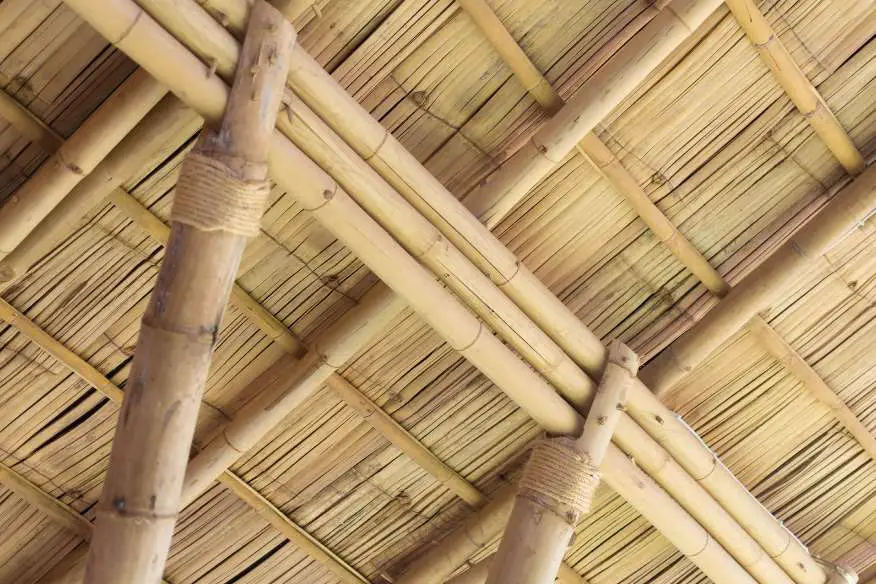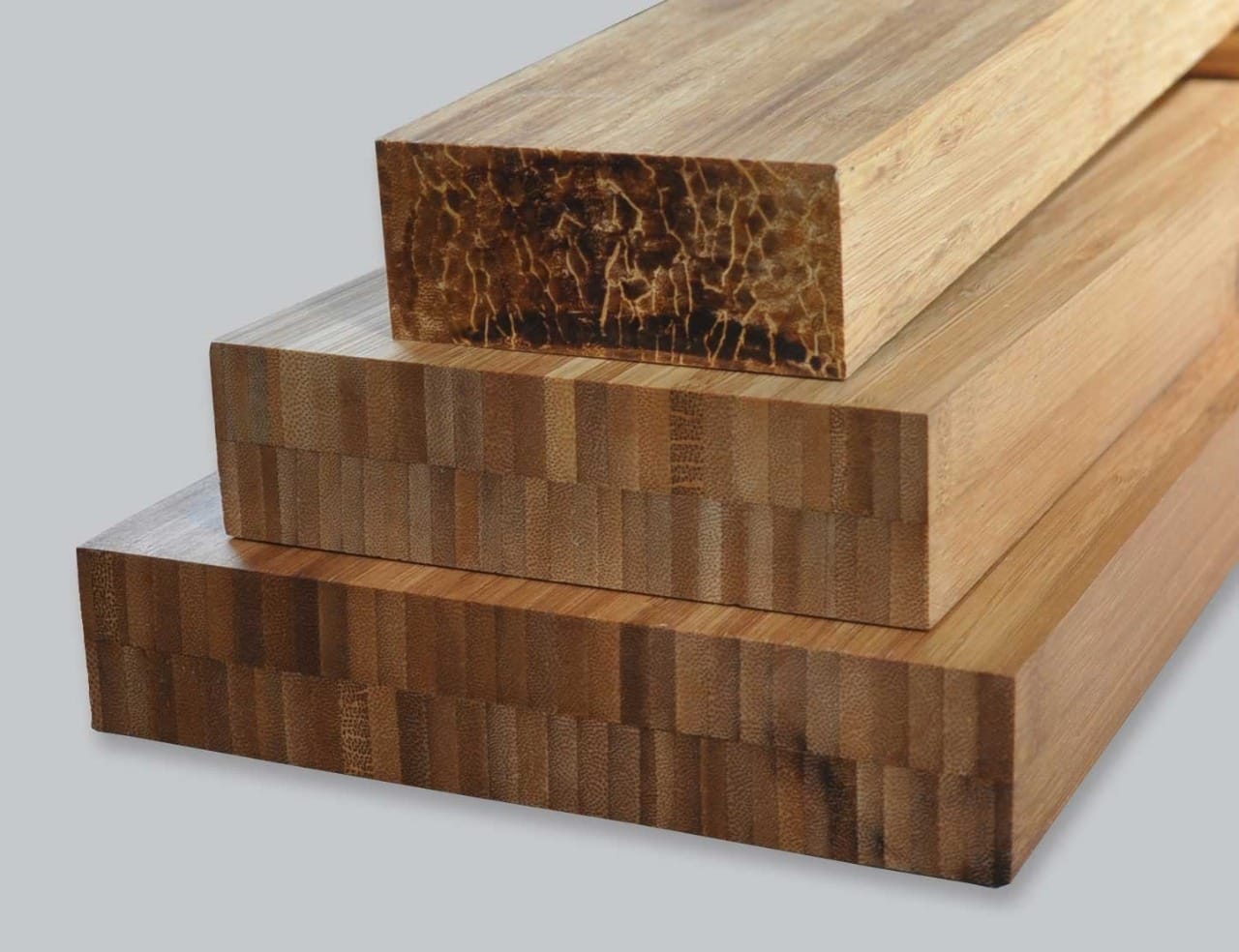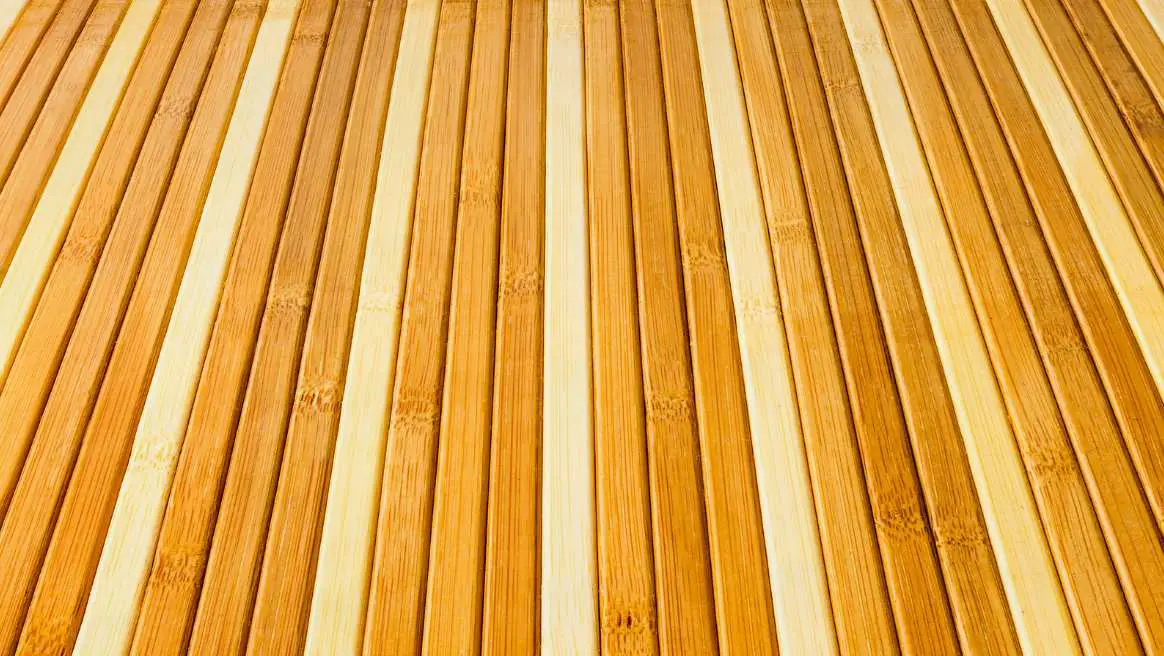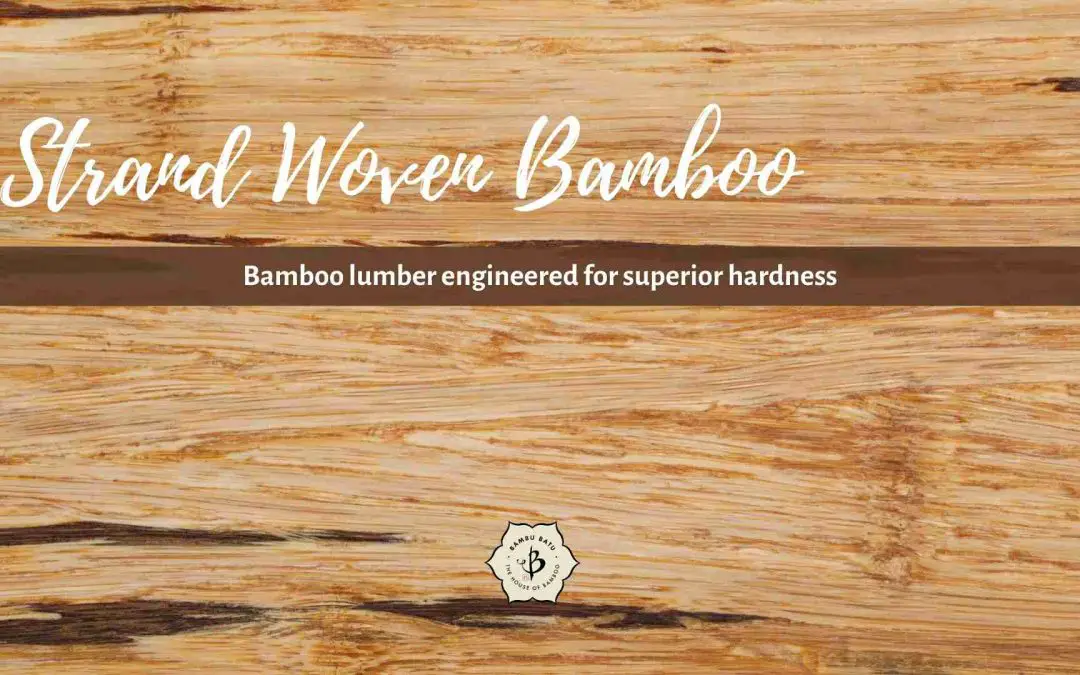Have you ever picked up a bamboo product and turned it over in your hand and wondered, “How did they do this?” If not, you must not be handling enough bamboo products. Some of them, like the bamboo socks and bamboo salad bowls, are just amazing. But these days, some of the most incredible bamboo items are showing up in the construction industry, things like structurally sturdy, weather-proof, strand woven bamboo.
Strand Woven Bamboo refers to a modern form of bamboo lumber produced through a process of compression under extreme pressure and heat. Unlike standard, laminated bamboo flooring, composed from layers of bamboo strips, strand woven bamboo incorporates shredded portions of bamboo running in different directions to create a harder, denser, heavier flooring product, with a beautiful wood-like grain.
Bamboo for flooring and more
The variety of bamboo lumber products on the market today is greater than ever before. As a result, we are seeing bamboo in all manner of consumer products and building materials, including cutting boards, flooring, cabinetry, solid furniture, and even outdoor decking.
(See our detailed article on Bamboo for Exterior Construction to learn more.)
Over the past 30 years, bamboo flooring has become nearly ubiquitous, first appearing in the US around 1991. Within a few years, bamboo cutting boards were also becoming widely available. Salad bowls, cooking utensils, laptop cases, and countertops quickly followed.
Most of these items, what we call ‘next generation’ bamboo products, are derived from one form of lamination or another. This is in sharp contrast to the ‘rustic’ or ‘traditional’ wares consisting simply of bamboo poles or slats, typically nailed or bound together with some kind of cord or thatching.

From laminated bamboo, with its sleek, modern appeal, strand woven bamboo was the next stage of evolution for this incredibly renewable resource. This unique method of processing, developed around 2001, results in a much harder and denser material, with an unusual grain that’s more similar to a hardwood.
Laminated vs Strand Woven Bamboo
The main difference between strand woven bamboo and laminated bamboo has to do with process by which the pieces of bamboo are pressed together. While laminated bamboo uses strips of solid bamboo running parallel, strand woven bamboo takes something like a mishmash of crushed and shredded bamboo running in all directions and compresses it.
Laminated bamboo was an amazing innovation that brought bamboo out of the huts and jungles of Asia and into the upscale homes of Europe and the United States. By taking uniform strips of bamboo — usually from the giant Chinese Moso species (Phyllostachys edulis) — and layering them together, manufacturers are able to create sheets and planks of bamboo lumber with a smooth, regular surface.
This material lends itself exceptionally well for flooring, tough, attractive, and easy to clean. You’ll see it in commonly in homes, offices, retail boutiques, and yoga studios.
As you can see from the end-grain in the image below, the strips of wood all line up perfectly in the standard, laminated bamboo. It has an irresistibly orderly elegance about it.

The basic principle behind laminated bamboo and strand woven bamboo is almost the same. They start with round bamboo poles and reduce them to smaller strips. Then they press them together to make a building material with bamboo’s hardness but the regularity of traditional lumber.
Rather than simply laminating the even strips, the strand woven process crushes the bamboo and compresses it under 3,000 metric tons of pressure. Through this extreme compression, you end up with about 50% more bamboo in an equal volume of material.
As result, the strand woven planks are considerably heavier. And that means the material is harder and stronger. It’s also about 50% more expensive. But for the extreme hardness, it’s worth it. Strand woven bamboo flooring is ideal in areas with heavy foot traffic. It generally scores 3-4,000 on the Janka hardness scale, right up there with Brazilian ebony.

The intense process also changes the appearance of the bamboo. Even segments and periodic nodes of bamboo are no longer visible. Instead it looks almost marbled, more like walnut or cherry wood. In addition to being smashed together, the extreme heat causes the natural sugars to caramelize and darken. Manufacturers also apply this carbonization process to standard laminated bamboo to achieve different shades of darkness.
Any decent bamboo flooring has a top coating to seal the wood. This ensures that the floors will be waterproof, though not necessarily weatherproof. And in some cases, a thicker coating will allow you sand the floors multiple times and refinish them.
Bamboo for indoor and outdoor use
Most bamboo flooring, like other hardwood floor, is intended for indoor use only. In time, the elements will take their toll, causing almost any wood to weather and crack.
But strand woven bamboo and structurally engineered bamboo, compressed to super high density, are strong enough to withstand the outdoors. Dasso XTR, for example, is one of the leading pioneers in bamboo building materials. Their revolutionary bamboo planks have been used for commercial and residential decks, seaside boardwalks, and exterior siding. Renuteq, another bamboo innovator, even produces bamboo beams architecturally suitable for outdoor, structural use.
Shopping for bamboo flooring and building material
Twenty-five years ago, you’d have to look pretty hard to find any bamboo flooring. Back then, you’d also be lucky to get an internet connection. But nowadays, every major hardware store has something like a warehouse full of bamboo flooring planks to choose from.
Still, the staff in those big box stores might not have the specialized knowledge to help you navigate the sweeping field of bamboo options. And like any other product on the shelves, there’s going to be a wide range of quality. Sure, bamboo is a fabulous, durable, sustainable material. But you need to know the difference between high-end bamboo and low-end bamboo.
Now that you know the difference between strand woven and standard laminate, you’ll be a good step ahead of the average consumer. You should expect the strand woven bamboo to cost about 50% more than your ordinary bamboo laminate. Remember to ask about the color options, too, because the carbonization process can render bamboo in a variety of shades. Also, be sure to see what kind of top finish the floors have. Some bamboo floors can be sanded and refinished.
Some of the top brands of bamboo flooring include Cali Bamboo in Southern California, Smith & Fong Plyboo in Northern California, and Dasso in Atlanta.
Producing strand woven bamboo
If you have a sizable plantation of bamboo, you may be interested in producing your own strand woven bamboo. It’s an excellent way to add value to your woody grass. But it’s a bit of a process, and might not be cost-effective unless you have a few thousand acres of mature bamboo available within a 50 mile radius or so.
Take a look at our article on Machinery for processing bamboo.
The equipment to process laminated bamboo runs somewhere in the upper six-digits. From there, you can always scale up your assembly line in order to produce strand woven bamboo. That manufacturing line will include a couple dozen separate pieces of machinery, and costs around $2 million altogether.
The incentives for processing bamboo into lumber, panels and parquet are pretty clear. Unlike your raw bamboo stalks, there’s a strong and steady demand for bamboo flooring and building materials. And they’re a lot easier to ship and transport than those giant, hollow poles.
Bamboo building blocks
If you’re interested in fortifying or ornamenting your home with more bamboo elements, strand woven or otherwise, you may also want to peruse some of these other popular articles.


























Excellent article, many thanks. Any help with finding decent sources if strang woven bamboo in Brasil are very welcome.
Does Brasil produce processed Bamboo products?
Check out CEBIS